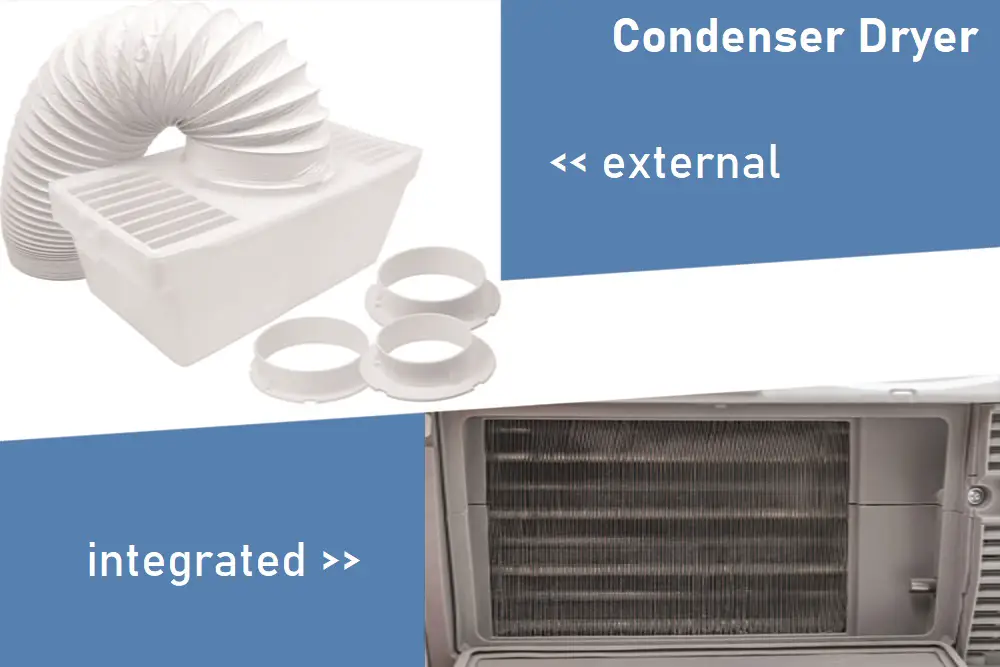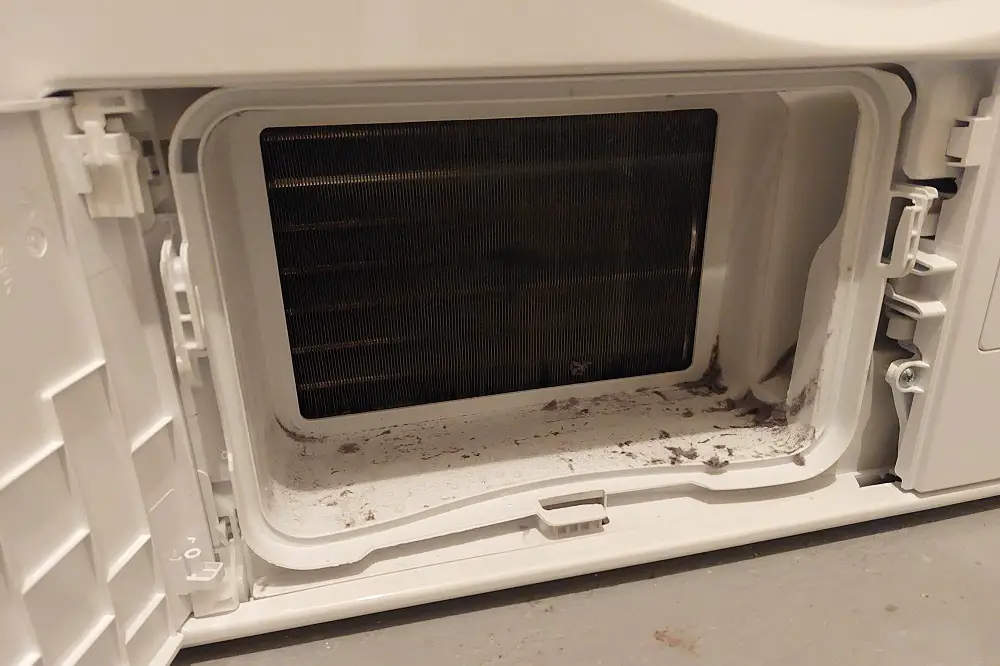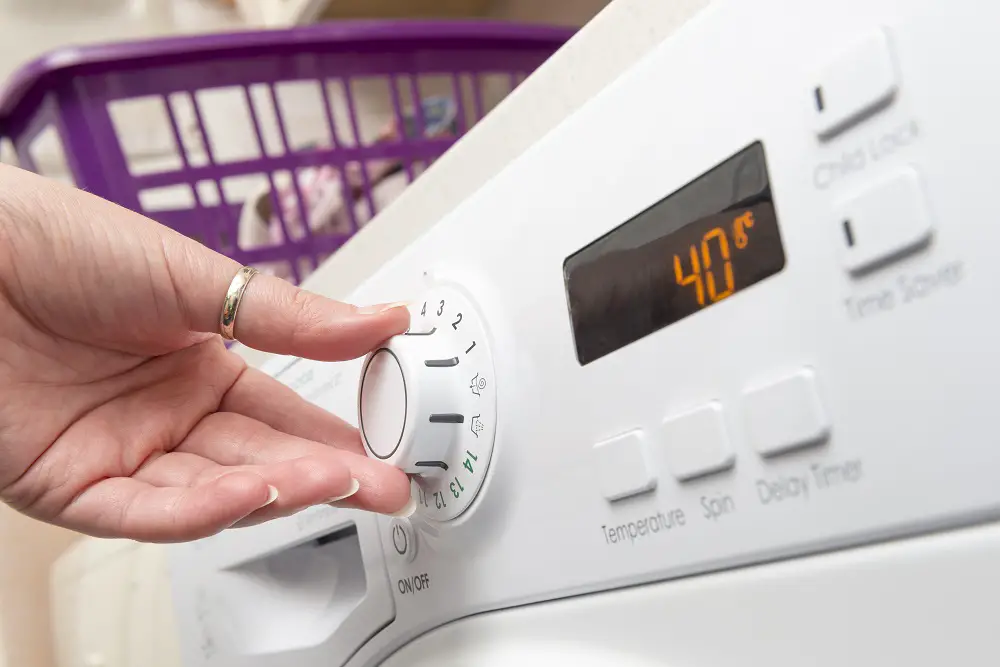As parents, one of our numerous responsibilities is taking care of our baby’s clothes, including how to safely and efficiently dry them. Many of us wonder whether it is safe to tumble dry baby clothes or if there are specific precautions we should take.
In this article, we will discuss the ins and outs of tumble-drying baby clothes and some essential tips for maintaining their quality and durability.
While most baby clothes can be tumble-dried, it is essential to know which fabrics are suitable for this method and which are not. We will explore various materials and how to read the care labels on your baby’s clothes to ensure their proper maintenance.
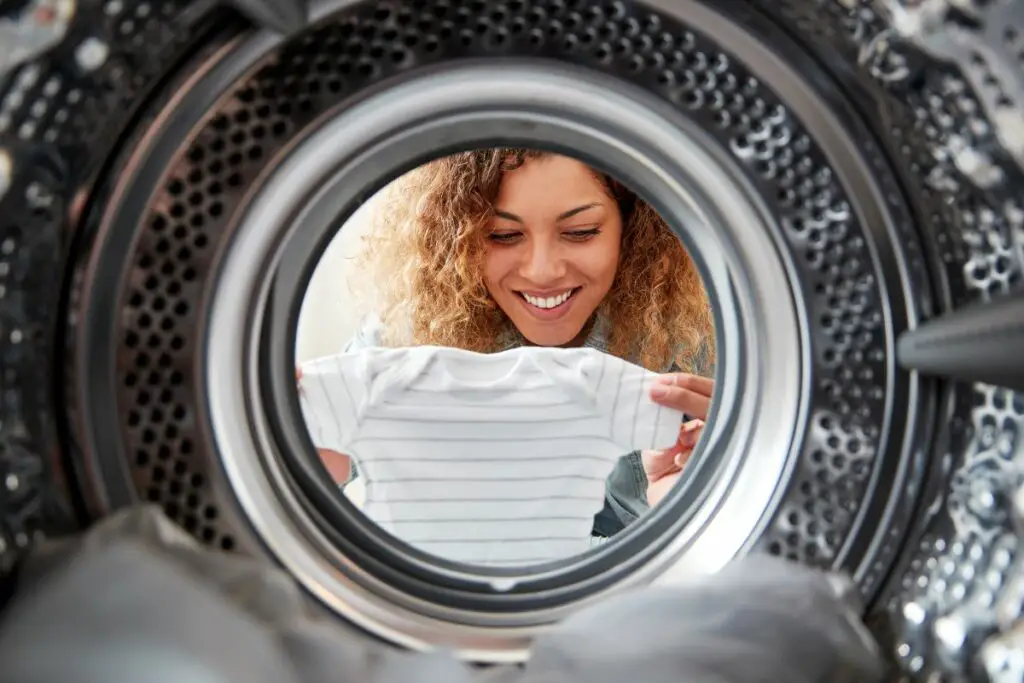
Additionally, we will provide some eco-friendly alternatives for drying baby clothes, especially for those looking to reduce their energy consumption and environmental impact.
In our journey of parenting, it’s crucial to understand the best practices for every aspect of our baby’s care, and this includes how to handle their tiny, adorable outfits.
By learning how to safely tumble dry baby clothes, we can make our lives more manageable and keep our little one’s clothes in tip-top shape.
Table of Contents
Pros and Cons of Tumble Drying Baby Clothes
Pros
- Convenience
- Reduced Drying Time
Cons
- Shrinkage
- Fading
- Static Cling
Convenience
Tumble-drying baby clothes brings convenience to parents’ lives. Busy parents often appreciate the ease of using a dryer to get their baby’s clothes dry quickly.
After a laundry cycle, we simply transfer the clothes to the dryer, set the appropriate settings, and let the machine do its work.
No need to worry about hanging each item on a clothesline or dealing with unpredictable weather.
Reduced Drying Time
A significant advantage of tumble drying is the reduced drying time compared to air-drying.
Wet baby clothes can take hours or even days to dry on a clothesline or rack, depending on the weather and humidity. On the other hand, tumble dryers can complete the drying process within an hour or two, making it much faster and more efficient.
This can be a huge factor, especially for babies that tend to spit up after feeding. The time needed until you can re-use these clothes is minimized bringing you back a lot of capacities.
Shrinkage and Fading
One downside to tumble-drying baby clothes is the risk of shrinkage and fading.
Certain fabrics, particularly those made of natural fibers, can shrink when exposed to high heat in the dryer. To avoid this issue, we recommend using low heat or delicate settings. Check the clothing labels for care instructions before tumble drying.
Fading can also occur when tumble drying, as the heat and friction generated within the dryer can cause colors to fade over time. To minimize fading, try turning clothes inside out and using a low heat setting.
Static
Tumble drying can cause static cling, especially in synthetic fabrics. The friction created by the tumbling action can lead to the build-up of static electricity.
This can be bothersome when handling clothes and may also cause irritation to a baby’s sensitive skin. One way to help reduce static is by using dryer balls or anti-static sheets when drying baby clothes.
Types of Baby Clothes and Materials
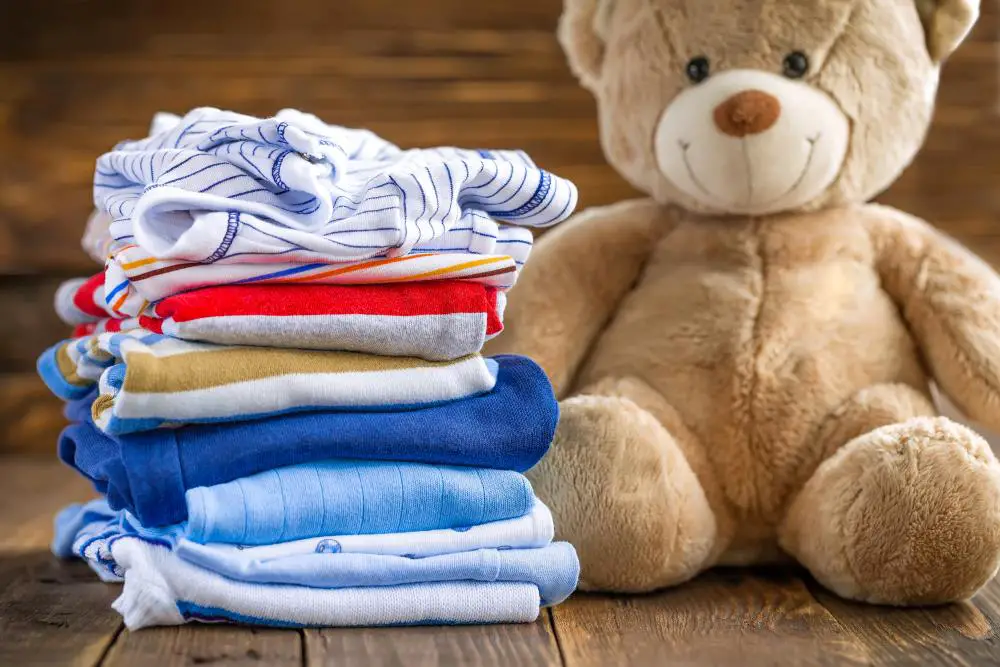
Cotton
Cotton is a popular material for baby clothes due to its softness, breathability, and durability.
We recommend checking the labels of cotton baby clothes for tumble-drying instructions. Generally, baby clothes made with natural fibers can be tumble-dried, using the low heat or delicate setting.
Pros:
Soft, breathable, durable
Tumble dry:
Low heat or delicate setting
Wool
Wool is a natural fiber that provides warmth and is commonly used in baby clothes like sweaters and blankets.
When it comes to tumble drying, we suggest avoiding the dryer for wool items and opting for air drying instead. This will help prevent any potential damage or shrinkage.
Pros:
Warm, natural fiber
Tumble dry:
Not recommended
Lace and Mesh
Lace and mesh materials are often found in delicate baby outfits and accessories.
We recommend handwashing these types of clothing and laying them flat to dry, as tumble drying can damage the delicate fabric and cause it to lose its shape or develop pilling.
Pros:
Delicate, beautiful
Tumble dry:
Not recommended
Onesies and Socks
Onesies and socks tend to be made from various materials, including cotton, polyester, or a blend of fibers.
Typically, these items can be tumble-dried on low heat or delicate settings, but always check the care label for specific instructions.
Pros:
Versatile, comfortable
Tumble dry:
Low heat or delicate setting, check care label
By being mindful of the materials and care instructions for different types of baby clothes, we can ensure their longevity while keeping them in the best possible condition for our little ones.
Tumble Drying Instructions and Settings
When it comes to tumble drying baby clothes, it’s essential to choose the right settings on your dryer. In this section, we’ll discuss the different cycles and heat settings available on most tumble dryers, designed specifically for baby clothes.
Baby Cycle
The Baby Cycle is a specialized setting designed for drying baby clothes.
Here’s what you can expect when using this cycle:
- Low heat setting to ensure minimal shrinkage and prevent fabric damage.
- Gentle tumbling to ensure your baby’s clothes remain soft and comfortable to wear.
- The cycle may include a cool-down phase to further protect clothes from heat damage.
Gentle Cycle
The Gentle Cycle is another common option for drying delicate fabrics, including baby clothes.
This cycle features:
- A low heat setting to protect the garments’ fibers.
- Reduced tumble speed to avoid clothes stretching or warping.
- Many gentle cycles also include a cool-down phase at the end to keep clothes fresh.
No Heat
The No Heat setting, also known as the Air Fluff or Air Dry setting, is ideal for heat-sensitive baby clothes.
When using this setting:
- No heat is generated, significantly reducing the risk of fabric damage.
- Clothes take longer to dry but are less likely to shrink or lose their shape.
- It’s especially suitable for delicate baby clothes and items with elastic or waterproof fabrics.
Low Heat
The Low Heat setting is ideal for most baby clothes made from natural fibers.
This setting provides:
- A gentle heat that reduces the risk of shrinking and fabric damage.
- A suitable option for most cotton, linen, and natural fiber baby clothes.
- It’s important to check the care label on each garment before using this setting.
Medium Heat
Even though Medium Heat can be used for some baby clothes, it’s generally better-suited to more robust materials.
Here are some key points to consider:
- Medium Heat increases drying efficiency but may cause shrinkage or fabric damage.
- Only use this setting for items such as thick onesies, blankets, or heavier knits.
- Always check the care label to ensure the garment can safely be tumble-dried at this heat level.
High Heat
High Heat is not recommended for baby clothes, as it can cause significant shrinkage and fabric damage.
Use this setting only if:
- A garment’s care label explicitly indicates it can be dried at high heat.
- You are drying large, heavy items such as coats or thick blankets designed for babies.
By following these guidelines, you can efficiently and safely tumble-dry your baby’s clothes while maintaining their quality and comfort.
Alternative Drying Methods
Air Drying
Air drying is one of the most recommended methods when it comes to drying baby clothes. It is energy efficient and environmentally friendly, preserving the quality and longevity of the garments.
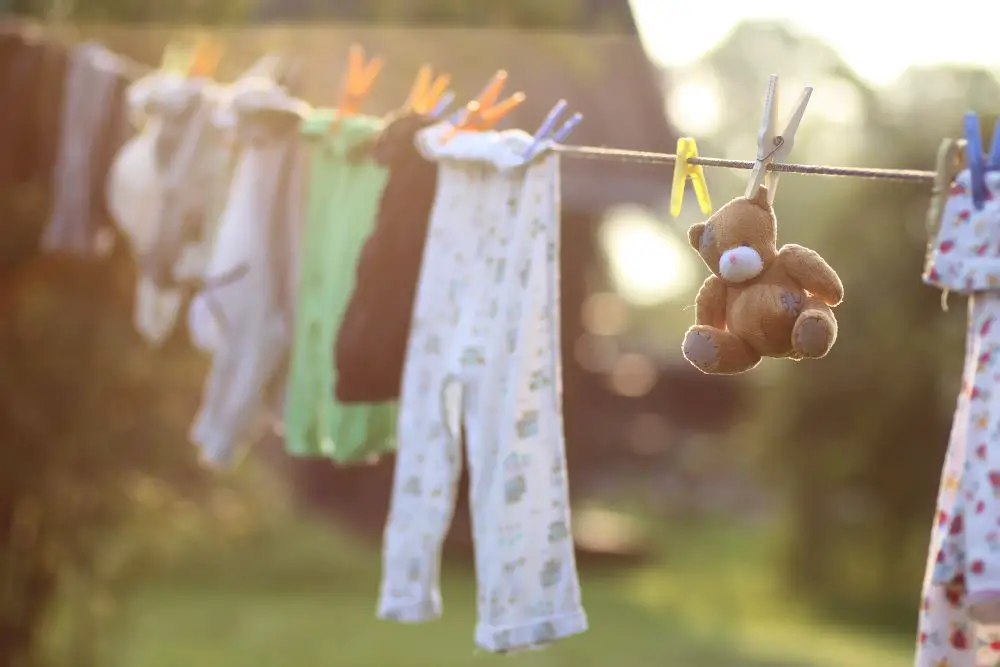
To air dry, simply hang the clothes on a clothesline or a drying rack, ensuring they are spread out evenly to facilitate quick drying. If the weather permits, we suggest hanging the clothes outside as sunlight refreshes clothing and kills germs naturally.
When air drying indoors, ensure that there is proper ventilation to avoid any damp or musty smells infiltrating the baby clothes. If we are drying small items like baby socks or bibs, we can use clothespins or clips to hang them securely.
Drying on Radiators
Drying baby clothes on radiators can save space, especially when living in a small apartment or during cold months when outdoor drying may not be an option.
There are a few precautions we should keep in mind while using this method:
- Use a clothes rack or a towel rail attached to the radiator to avoid direct contact with the clothes and prevent possible overheating.
- Ensure proper ventilation and air circulation in the room as radiators can cause excessive moisture build-up, leading to dampness issues.
- Keep an eye on the drying progress and do not leave the clothes on the radiators for extended periods as this can cause them to become overly dry and damage the fabrics.
In conclusion, we recommend air drying as the best alternative to dry baby clothes.
However, drying on radiators can be a viable alternative when circumstances demand it. Be mindful of the precautions mentioned above to ensure the baby garments are well-cared for regardless of the drying method chosen.
My Thoughts On Tumble Drying Baby Clothes
Using a clothes dryer to speed up the drying process is a convenient option that I do use regularly. It provides me with fresh usable baby clothes and reduces the need to buy more items for my spitting baby.
The risk of shrinkage and fading can be reduced with the right setting. After some cycles, I know the materials in my boy’s clothes quite well and can easily manage the tumble drying without causing any damage.
This experience also enables me to select the best materials when buying new items for my kids.
